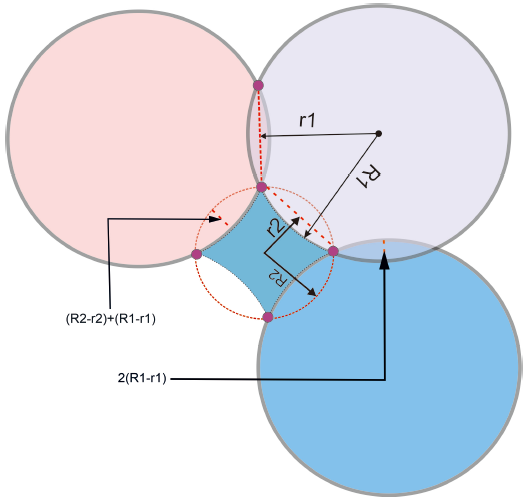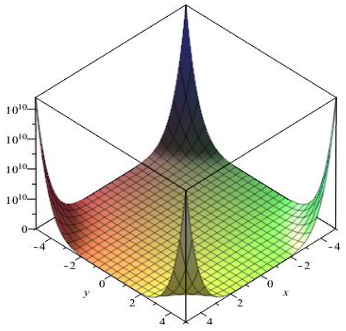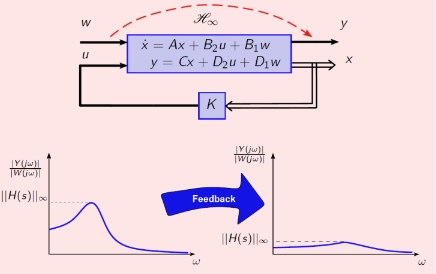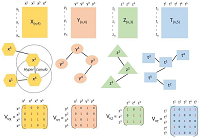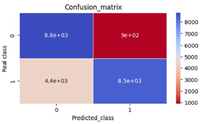Optimal control of dengue fever transmission dynamics in Kenya
Abstract
The emergence of dengue fever in Kenya has been witnessed in the recent past, leading to public health alerts and disruption of economic activities. The outbreaks have mainly been restricted to the Northeastern and Coastal counties of the country. As such, this paper has focused on an epidemiological model that incorporates an optimal control model of the spread dynamics of dengue fever in Kenya. The objective of the study is to develop an optimal control solution for the spread dynamics of dengue fever in Kenya. This study introduced three time-dependent control variables, which were divided into long-term and short-term control measures. The short-term control measures include prophylactics (treatment) and the use of physical barriers (nets), while the long-term control measure is the treatment of Aedes aegypti mosquitoes with Wolbachia bacteria. The basic reproduction number with the control variables was determined. The set of adjoint points of the control systems was obtained together with the optimal control set. The numerical solutions to the control problem were obtained by use of the forward-backward sweep method and the Runge-Kutta order four method. The impact of utilizing various strategies that employed the combination of the three control measures in different combinations was examined. The control profile of the particular control measures used was also investigated. It was determined that the short-term control measures had more impact on the control of the spread dynamics of dengue fever when compared to the long-term control measure. As such, it was determined that a strategy that incorporates both the long-term and short-term control measures should be utilized for optimum control of dengue fever spread dynamics in Kenya.
References
[1]Nyanaro B, Kimathi G, Wainaina M. Mathematical modelling of dengue fever transmission dynamics in kenya. Journal of AppliedMath. 2024; 2(5): 1807–1807.
[2]Muthanje EM, Kimita G, Nyataya J, et al. March 2019 dengue fever outbreak at the kenyan south coast involving dengue virus serotype 3, genotypes iii and v. PLOS Global Public Health. 2022; 2(3): e0000122.
[3]Bosire C, Mutuku F, Ndenga B, et al. A narrative review of dengue fever infection and epidemic activity in kenya (2010 to 2020). PAMJ One Health. 2023; 12(10): 2023.
[4]Mwanyika GO, Moir M, Musa AO, et al. A decade of dengue disease burden in africa (2013–2023): A systematic review. medRxiv. 2024. doi: 10.1101/2024.10.22.24315827
[5]Xue L, Ren X, Magpantay F, et al. Optimal control of mitigation strategies for dengue virus transmission. Bulletin of Mathematical Biology. 2021; 83: 1–28.
[6]Kairu A, Were V, Isaaka L, et al. Modelling the cost-effectiveness of essential and advanced critical care for covid-19 patients in kenya. BMJ global health. 2021; 6(12): e007168.
[7]Rajendran D, Vinayagam S, Sekar K, et al. Symbiotic bacteria: Wolbachia, midgut microbiota in mosquitoes and their importance for vector prevention strategies. Microbial Ecology. 2024; 87(1): 154.
[8]Hamed AMR, El-Sherbini MS, Abdeltawab MSA. Eco-friendly mosquito-control strategies: Advantages and disadvantages. Egyptian Academic Journal of Biological Sciences, E. Medical Entomology & Parasitology. 2022; 14(1): 17–31.
[9]Khan MA, Fatmawati. Dengue infection modeling and its optimal control analysis in east java, indonesia. Heliyon. 2021; 7(1): e06023.
[10]Zou L, Chen J, Feng X, Ruan S. Analysis of a dengue model with vertical transmission and application to the 2014 dengue outbreak in guangdong province, china. Bulletin of Mathematical Biology. 2018; 80: 2633–2651.
[11]Asamoah JKK, Yankson E, Okyere E, et al. Optimal control and cost-effectiveness analysis for dengue fever model with asymptomatic and partial immune individuals. Results in Physics. 2021; 31: 104919.
[12]Ma C, Li X, Zhao Z, et al. Understanding dynamics of pandemic models to support predictions of covid-19 transmission: Parameter sensitivity analysis of sir-type models. IEEE Journal of Biomedical and Health Informatics. 2022; 26(6): 2458–2468.
[13]Khan AA, Ullah S, Amin R. Optimal control analysis of covid-19 vaccine epidemic model: A case study. The European Physical Journal Plus. 2022; 137(1): 1–25.
[14]Kumari N, Kumar S, Sharma S, et al. Basic reproduction number estimation and forecasting of covid-19: A case study of india, brazil and peru. Communications on Pure & Applied Analysis. 2023; 22(2).
[15]Chan M, Johansson MA. The incubation periods of dengue viruses. PloS one. 2012; 7(11): e50972.
[16]Osman S, Makinde OD. A mathematical model for coinfection of listeriosis and anthrax diseases. International Journal of Mathematics and Mathematical Sciences. 2018; 2018(1): 1725671.
[17]Osman S, Otoo D, Sebil C. Analysis of listeriosis transmission dynamics with optimal control. Applied Mathematics. 2020; 11(7): 712–737.
[18]Osman S, Otoo D, Makinde OD. Modeling anthrax with optimal control and cost effectiveness analysis. Applied Mathematics. 2020; 11(3): 255–275.
[19]Lee JS, Mogasale V, Lim JK, et al. A multi-country study of the economic burden of dengue fever based on patient-specific field surveys in burkina faso, kenya, and cambodia. PLoS Neglected Tropical Diseases. 2019; 13(2): e0007164.
[20]Cohen J, Dupas P. Free distribution or cost-sharing? Evidence from a malaria prevention experiment in kenya. The Quarterly Journal of Economics. 2010; 125(1): 1–45.
[21]Knerer G, Currie CSM, Brailsford SC. The economic impact and cost-effectiveness of combined vector-control and dengue vaccination strategies in thailand: Results from a dynamic transmission model. PLOS Neglected Tropical Diseases. 2020; 14(10): e0008805.
Copyright (c) 2025 Author(s)

This work is licensed under a Creative Commons Attribution 4.0 International License.





